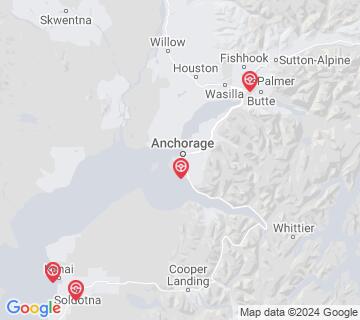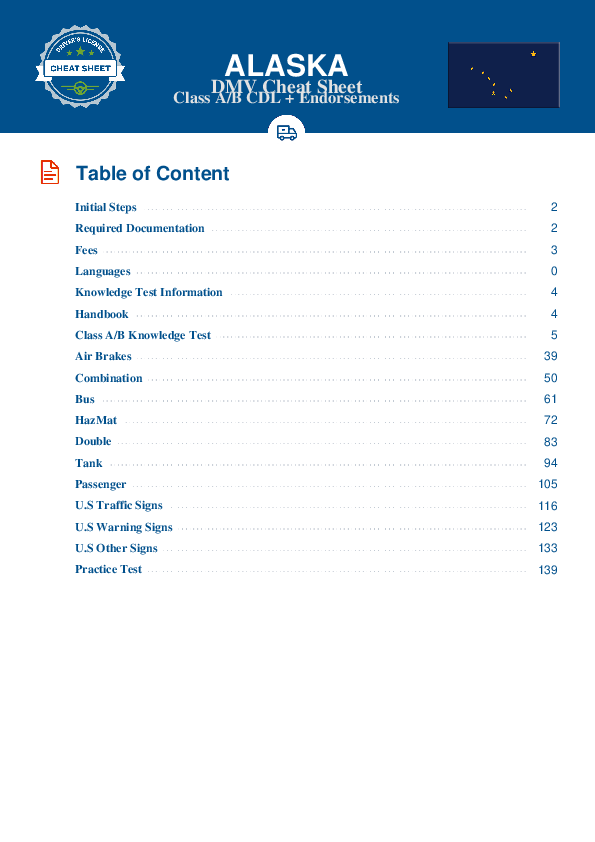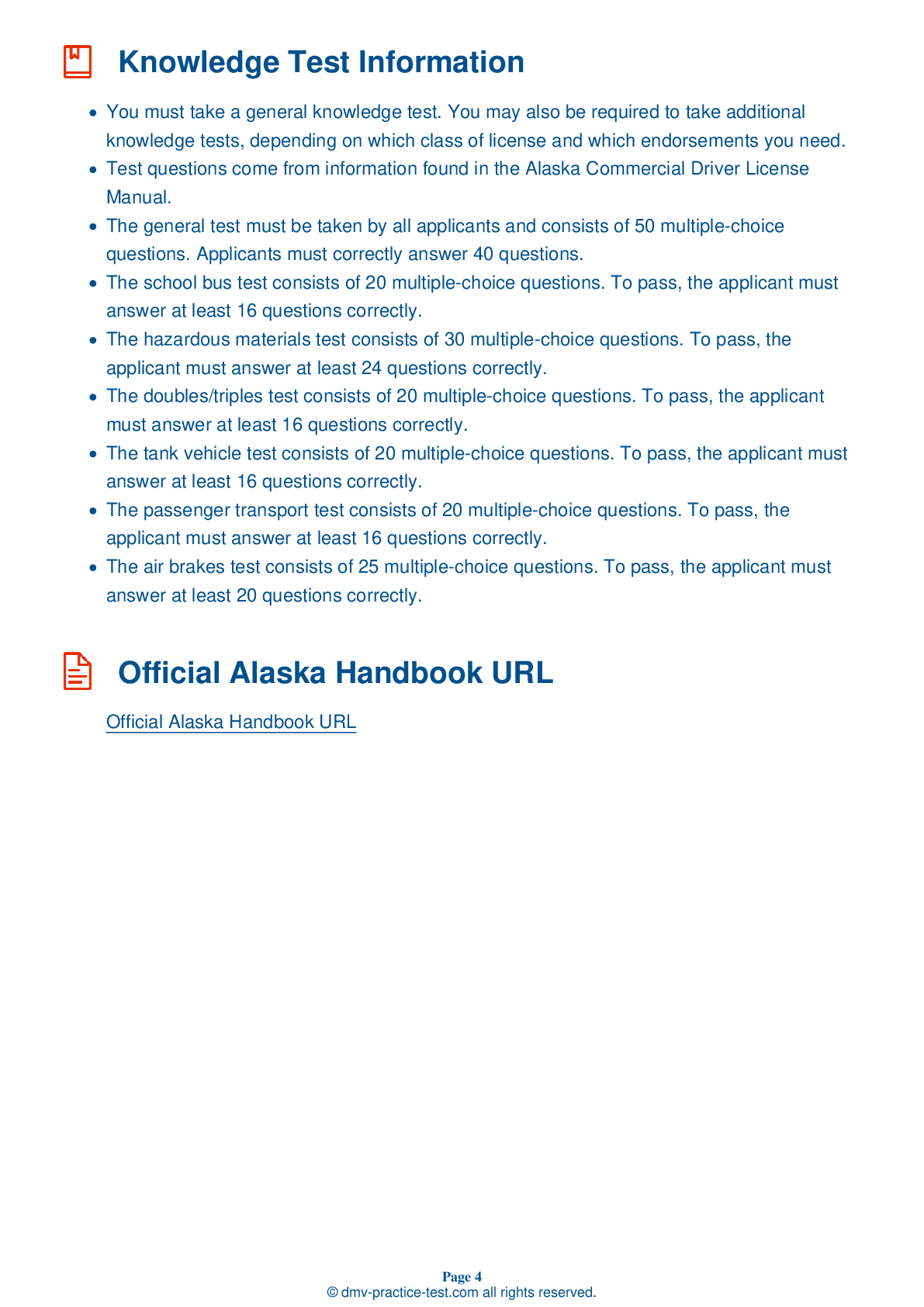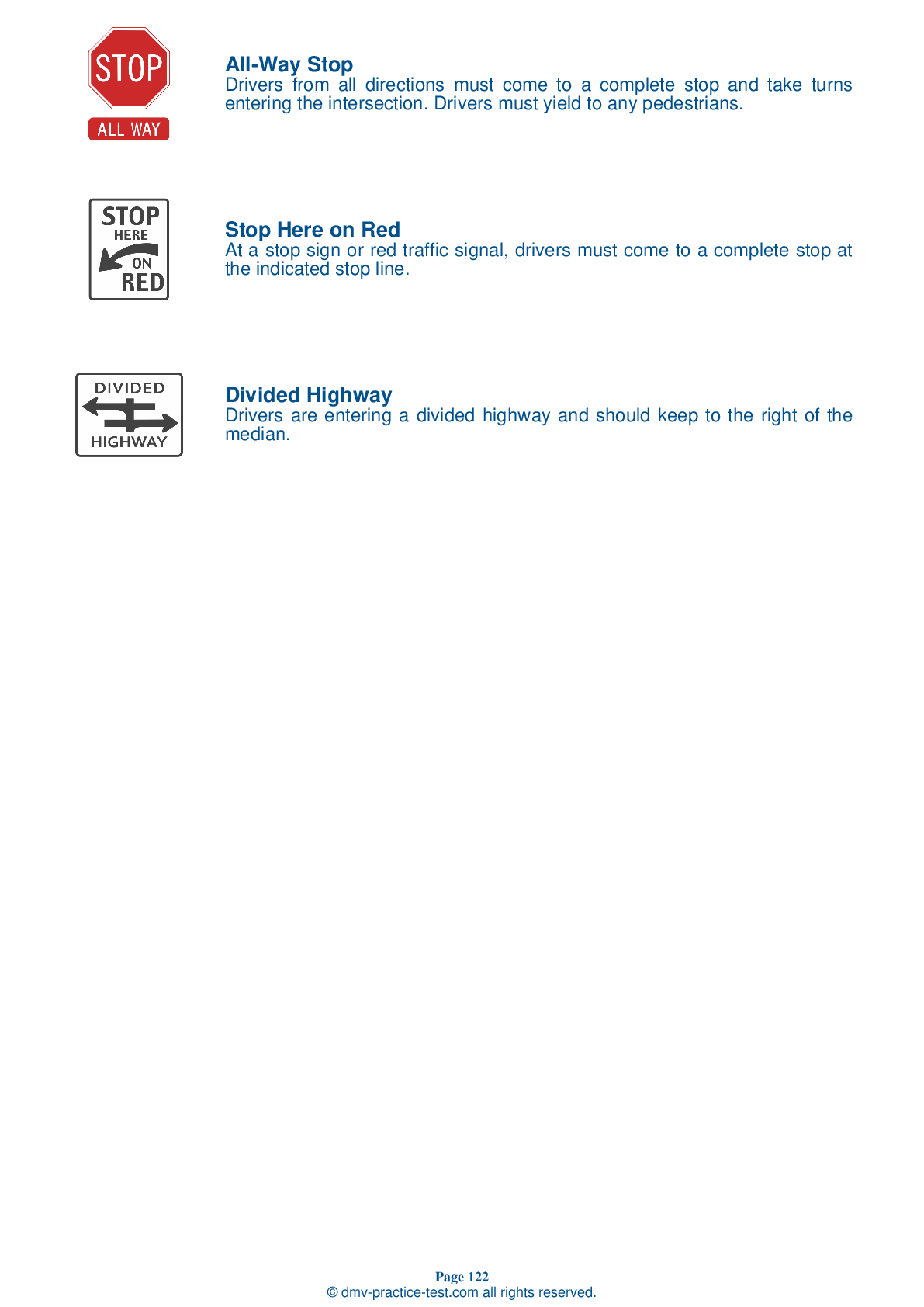Tank #1
Tank Endorsement Test | Alaska 2025 #1
Train for FREE with our Alaska tank endorsement practice test online. The official exam test consists of several obligatory parts, with all of them checking your knowledge of different blocks of road rules. If you need to obtain a AK tank license in 2025, practice as much as possible. Free sample tests published on our website will help you check and improve your knowledge and boost your grades. Please bear in mind that DMV requirements for issuing a CDL tank vehicle endorsement may vary from state to state.
20
16
20
1 . When parked on the side of the road:
Always turn on your four-way emergency flashers if you must park on the side of the road. This is especially important when traveling at night.
2 . How long should it take for oil pressure to reach a normal level when starting a vehicle?
After starting a vehicle's engine, the oil pressure should come up to a normal level within seconds. Do not operate a vehicle if it has oil pressure that is low, dropping, or fluctuating.
3 . Skids caused by acceleration can usually be resolved by:
Skids caused by acceleration frequently occur on slippery road surfaces. These skids can generally be resolved by the driver removing their foot from the accelerator.
4 . When making a tight maneuver, you should:
It is important for you to be aware of your surroundings at all times. To do this, regularly check your mirrors. You should make a particular point of checking your mirrors when merging, changing lanes, turning, and performing tight maneuvers.
5 . To make it easier to leave a parked position, you should park:
Backing is always dangerous and should be avoided whenever possible. When parking, look to park in a space that will allow you to pull forward when exiting.
6 . When starting an engine, warning lights and buzzers should:
After starting a vehicle's engine, the warning lights and buzzers for oil, coolant, charging circuits, and the Anti-Lock Braking System (ABS) should go out right away.
7 . If you plan to slow down, you can warn drivers behind you by:
Before slowing down, it is a good idea to flash your brake lights by lightly tapping your brake pedal a few times. This will warn drivers behind you of your plans to slow down.
Search the best driving school in your neighbourhood
2025 Alaska | Frequently Asked Questions
A CDL Class B license in Alaska allows the holder to operate any single vehicle with a Gross Vehicle Weight Rating (GVWR) of 26,001 pounds or more, or any such vehicle towing a vehicle not exceeding 10,000 pounds GVWR. This typically includes commercial buses, dump trucks, delivery trucks, and garbage trucks.
A Class B CDL license in Alaska allows the holder to operate vehicles such as city buses, tour buses, segmented buses, delivery trucks, dump trucks with small trailers, and garbage trucks. It's valid for any single vehicle with a Gross Vehicle Weight Rating (GVWR) of 26,001 pounds or more, or such vehicle towing a vehicle not exceeding 10,000 pounds GVWR.
To acquire a Class B CDL license in Alaska, you must be at least 18 years old (21 for interstate driving), possess a valid Alaska driver's license, pass a vision test, and successfully complete a general knowledge test. You must also pass a skills test in the type of vehicle you plan to drive, which includes a pre-trip vehicle inspection, a basic vehicle control test, and an on-road driving exam.
In Alaska, you must be at least 18 years old to qualify for a Class B CDL license for intrastate driving (within state borders). However, you must be at least 21 years old to engage in interstate driving (across state lines) or to transport hazardous materials.
While not always necessary, specific endorsements may be required for a Class B CDL license depending on the type of vehicle you plan to drive or the cargo you plan to transport. These could include endorsements for passenger vehicles, school buses, tank vehicles, or hazardous materials. Each endorsement requires passing a separate knowledge test and sometimes a skills test.
The Class B CDL skills test in Alaska encompasses three main areas: pre-trip vehicle inspection, basic vehicle control, and on-road driving. The pre-trip inspection examines your ability to assess your vehicle's safety. Basic vehicle control tests your ability to handle, turn, and stop the vehicle. On-road driving assesses your ability to drive safely in traffic.
Yes, Class B CDL license holders in Alaska are limited to operating vehicles weighing more than 26,001 pounds or towing vehicles weighing less than 10,000 pounds. They can also operate buses with a seating capacity of 24 passengers or more. However, they cannot drive Class A vehicles unless they have the appropriate endorsements and additional training.
In Alaska, the written Class B CDL test is primarily administered in English, in accordance with federal regulations. This is to ensure that all commercial drivers can read and understand traffic signs, signals, and other driving materials in English. Therefore, it's not typically offered in other languages.
Yes, you can request accommodations for the Class B CDL written exam if you have a disability. The Alaska DMV is committed to providing reasonable accommodations under the Americans with Disabilities Act. You'll need to provide documentation of your disability and specify your needed accommodations. It's recommended to make this request well in advance of your test date.
If you don't pass the Class B CDL written test in Alaska, you can retake it. However, you must wait at least one day before retesting. Keep in mind, there may be additional fees for each retest. It’s also recommended to study thoroughly and possibly seek additional training before attempting the test again.




